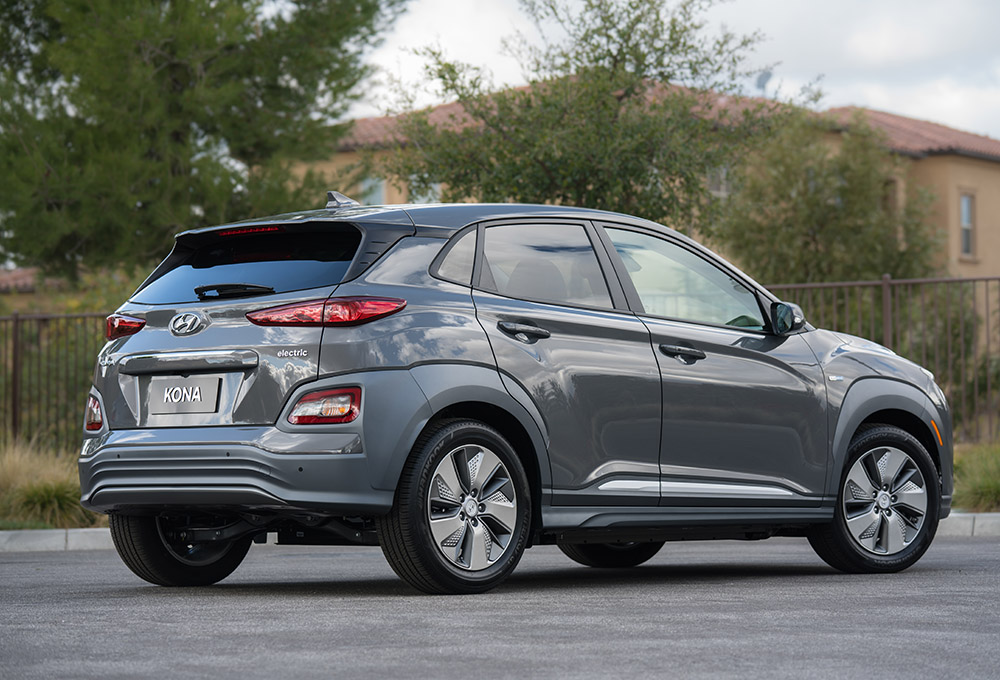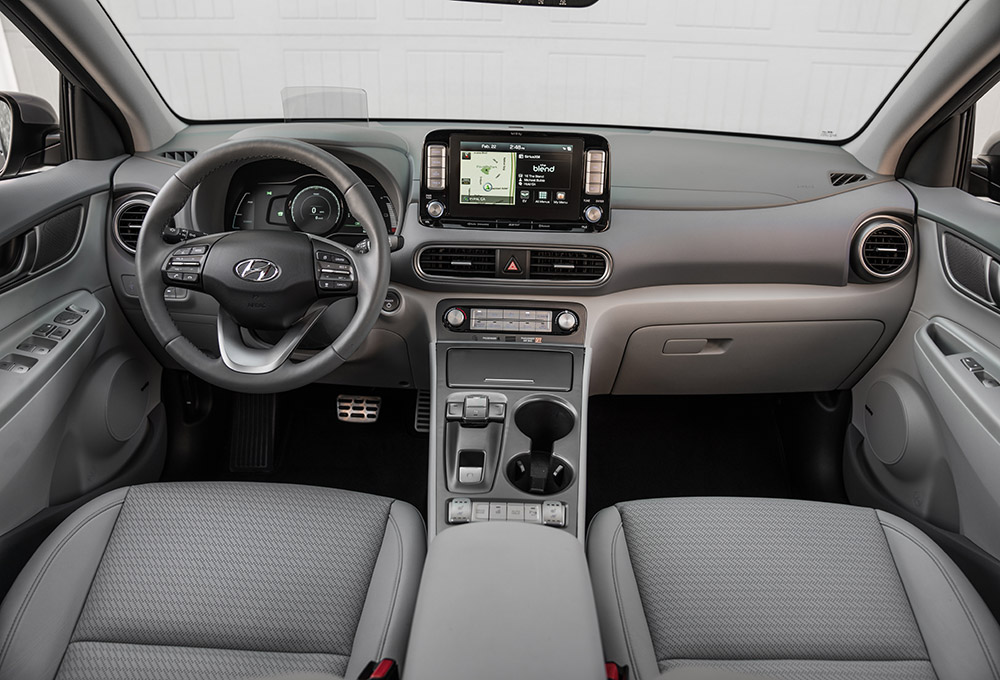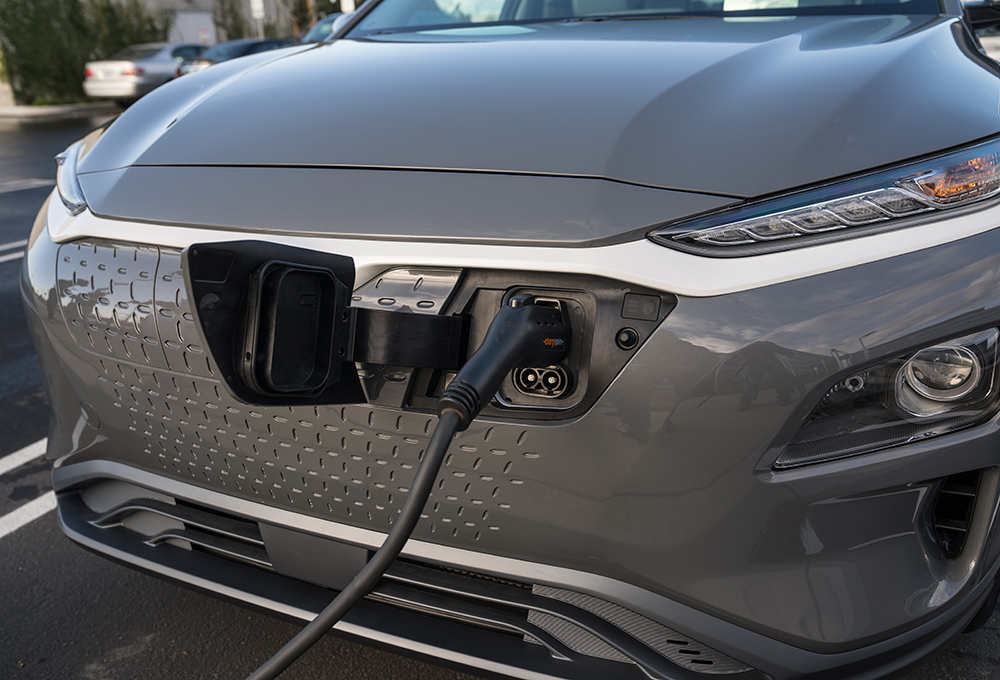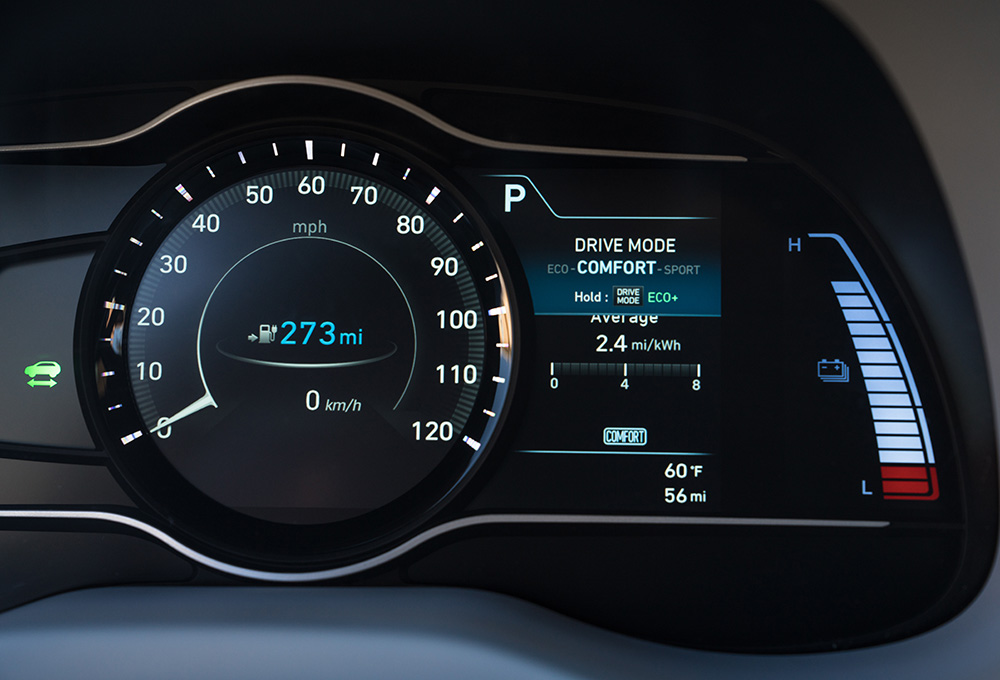What’s so remarkable about the Hyundai Kona Electric is how unremarkable it is. Essentially an electrified version of Hyundai’s B-class SUV, if the even hotter-selling C-class SUV segment offered equivalent performance, the industry could almost call it done for electrified daily drivers and move on to long-range solutions such as fuel cells. As is, the Kona Electric’s 258-mile (415-km) EPA-certified range provides an entirely livable compact-segment alternative, in a more fashionable SUV profile than the otherwise very similar Chevrolet Bolt.
The B-class form factor notably pegs currently affordable battery tech at compact-car levels, motivating mass levels low-enough to make vehicles like the Kona Electric mostly immune from range-anxiety mania. These are still capacious batteries, however, making recharging inconvenient for anyone without dedicated high-voltage connections (think days, not hours if seeking full replenishment from a regular wall outlet). But for multi-vehicle homes with high-amp access, offerings like the Kona prove the industry is delivering on real-world EV products.

Small SUV, big battery
The Kona Electric features a 64-kW·h lithium-ion polymer battery and is propelled by a permanent-magnet synchronous electric motor producing 201 hp (150 kW) and 291 lb·ft (395 N·m). Battery cells are supplied by LG Chem, and the battery system is both liquid-cooled and has its own heating system for conditioning in colder climates. The pack operates at 356 volts, and total battery-system weight is under 1,000 lb (453 kg). Hyundai claims an energy density of 141.3 Wh/kg and a powertrain inverter power density of 25.4 kVA per liter. The result, driving through the single-speed reduction gear (7.981:1), is a segment-leading 258-mile EPA estimated range (the Chevy Bolt is rated at 238 miles from its 60 kW·h battery).
The Kona Electric utilizes a standard Level-II on-board charging system capable of a 7.2 kW rate of charge. At that rate, Hyundai claims a 0-to-80% charge can be achieved in 9 hours and 35 minutes. With a Level-III (100 kW) charger, the company claims that duration drops to 54 minutes. The SAE-Combo charging port is integrated into the driver’s side of the front grille for head-in parking at charging stations, and a charge indicator is located on top of the dashboard to make it easy to see the state-of-charge (SOC) from outside the vehicle. The port also features a SOC indicator and an Immediate Charge button, which will override any scheduled charging timetables.

Dedicated chassis tech
Hyundai is the only global manufacturer to produce its own vehicle steels, and the front-wheel-drive Kona Electric’s unibody features advanced high-strength alloys utilizing proprietary hot-stamping methods. The structure is joined by extensive use of structural adhesives. For the Electric version, the Kona’s chassis adds a dedicated battery-protecting perimeter with a high-strength structural aluminum beam reinforcing its inside wall, a high-strength steel reinforced grid-type lower frame structure and floor-connection structural reinforcements.
Exterior changes compared to the non-EV Kona are mostly aerodynamic, including optimizing underbody airflow, a flush front and active lower front fascia and more aerodynamic wheels. The results are a 0.29 Cd and an electronically governed top speed of 104 mph (167 km/h).
The front suspension features a MacPherson strut setup with gas-filled dampers and a hollow stabilizer bar. The rear multi-link suspension has been engineered for minimal component intrusion, and the Kona Electric offers the same rear cargo volume as the internal-combustion version: 19.2/45.8 cubic feet with the rear seats up/down, respectively.
Standard are four-wheel disc brakes, electric-assist power steering and 17-inch alloy wheels with 215/55R17 tires. The Kona Electric offers three regular drive modes (Eco, Normal and Sport), plus an Eco+ mode for emergency range situations (or hypermiling fans), reducing power to features as needed. The modes alter steering feel and powertrain responsiveness, with Sport mode emphasizing acceleration, while Normal and Eco modes progressively prioritize range over performance with more conservative power-delivery strategies.

Content heavy
The Kona Electric is tarted up for a B-class vehicle, with Hyundai reasoning the poshness will ease downsizing pain for consumer making the EV leap from higher-tier vehicles. Those downsizers will be pleasantly surprised to find lux features such as a power driver’s perch, heated leather seats, automatic climate control, keyless entry and a floating touchscreen with CarPlay/Android Auto support.
Hyundai’s standard safety suite includes forward-collision avoidance/assist with pedestrian detection; driver attention/blind-spot warning, along with lane-keep, high-beam and rear cross-traffic-avoidance assists. All Kona Electric models will arrive with a complimentary three-year Blue Link connectivity services subscription with dedicated EV features including remote charge management, charge scheduling, power history and range.
Options includes an 8-inch navigation setup; shift-by-wire center console with additional storage below; heads-up display; rain-sensing wipers, an Infinity (Harman) premium audio setup with eight speakers, subwoofer, Clari-Fi “music-restoration technology” and smartphone integration, plus a notably thoughtful Qi wireless charging setup.
Fully WPC (Wireless Power Consortium) compliant, the Qi system indicates when the phone has fully charged, reminds occupants to remove their phone when exiting the vehicle, and detects when a foreign object is in the center-console recharging area that could interfere with charging.

On the road
The Kona Electric feels like a heavier, more premium and swifter version of the regular Kona. Hyundai had not released curb weights at press time, but its lithium-ion gravitas is easily countered by the almost 300 lb·ft delivered from a stop (the Kona’s standard 2.0 L produces 132 lb·ft at 4500 rpm). Content levels for a B-class vehicle are also generous enough to make you think you’ve accidentally wandered into the European market. Minus the compact size and still low seating position for an SUV, the cabin is quiet and a pleasant place to witness the day’s commute.
Regenerative braking levels are managed by the two steering-wheel mounted paddles, and you can use the left (increase-regen) paddle as a brake to bring the vehicle to a complete stop for true “one-pedal” driving. A slick, grade-sensing Smart Regenerative System uses the adaptive-cruise radar and the four levels of regen to maintain following distances and optimize charging while in traffic, reducing commuting stress while increasing range.
The ample electric torque makes the Kona Electric fun in urban settings, with plenty of instant grunt to stay relevant in the daily grind’s cut and thrust. The driving modes have distinct personalities, with the calmer Eco mode making the Kona Electric feel most like an exceedingly quiet ICE powered vehicle.
The 2019 Kona Electric will be produced in Ulsan, Korea and will be available at the beginning of 2019, with initial availability in California and subsequently in the ZEV-focused states in the western and northeastern regions of the U.S. Pricing for the new electric cute-ute has yet to be announced, but it is expected to be competitive with the Chevy Bolt.

